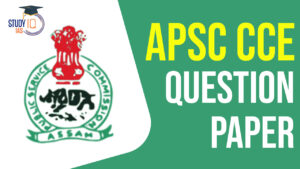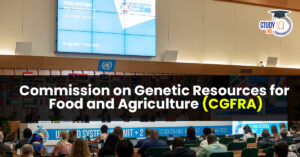Daily Current Affairs for UPSC 2023
Q) Which of the following amendment of the Indian Constitution designated Union Territory of Delhi as the National Capital Territory of Delhi?
- The 44th Constitutional Amendment
- The 69th Constitutional Amendment
- The 79th Constitutional Amendment
- The 89th Constitutional Amendment
Daily Current Affairs for UPSC – 9 August April 2023
Explanation:
The Rajya Sabha passed the Government of NCT of Delhi (Amendment) Bill, 2023 – which seeks to dilute the powers of the Delhi Government over services.
- Option (2) is correct: The National Capital Territory of Delhi Act (NCTDA), 1991 created Delhi as a special union territory with the features of a state. The 69th Amendment of the Constitution in 1991 gave Delhi the special status. The amendment inserted new Articles 239AA and 239AB after Article 239A of the Constitution.
As per Article 239AA:
- The ‘Union Territory of Delhi’ came to be known as the ‘National Capital Territory of Delhi’ (NCT).
- The ‘Lieutenant Governor’ (LG) became the administrator of the NCT.
- A Legislative Assembly with the power to make laws for the NCT with respect to the matters in the State List and Concurrent List of the Constitution was set up
Article 239AB: It provides for president’s rule in Delhi when the administration of the territory cannot be carried on in accordance with the provisions of Article 239AA. The President’s rule is imposed on a report from the LG.
Q) Consider the following statements about the World Meteorological Organization (WMO):
- It is an intergovernmental organization.
- It was established after the World Earth Summit of 1992.
- India is a member of World Meteorological Organization.
- The headquarter of World Meteorological Organization is in Geneva.
How many of the statements given above are correct?
- Only one
- Only two
- Only three
- All four
Explanation:
According to a new report by the World Meteorological Organization (WMO), Asia is the world’s most disaster-prone region and it experienced 81 weather, climate and water-related disasters in 2022.
- Statements 1, 3 and 4 are correct but Statement 2 is incorrect: The World Meteorological Organization (WMO) is an intergovernmental organization with a membership of 193 Member States and Territories. It originated from the International Meteorological Organization (IMO), the roots of which were planted at the 1873 Vienna International Meteorological Congress. It was established by the ratification of the WMO Convention on 23 March 1950, WMO became the specialized agency of the United Nations for meteorology (weather and climate), operational hydrology and related geophysical sciences a year later. India is a member of WMO. The Secretariat, headquartered in Geneva, is headed by the Secretary-General. Its supreme body is the World Meteorological Congress.
Q) Consider the following statements about Amazon Cooperation Treaty Organisation (ACTO):
- It is a non-governmental organization formed in 1995.
- It has been established to promote the preservation of the Amazon basin and regulate Amazonian development through international cooperation.
Which of the statements given above is/are correct?
- 1 only
- 2 only
- Both 1 and 2
- Neither 1 nor 2
Explanation:
The eight countries that make up the Amazon Cooperation Treaty Organization (ACTO) have recently signed the Belém Declaration during their Summit in Brazil.
- Statement 1 is incorrect but Statement 2 is correct: The Amazon Cooperation Treaty Organization (ACTO) is an intergovernmental organization formed in 1995 by the eight Amazonian countries which signed the Amazon Cooperation Treaty (ACT). ACTO has been founded to promote the preservation of the Amazon basin and regulate Amazonian development through international cooperation. ACTO has four official languages: Dutch, English, Portuguese, and Spanish. ACT aims to promote the harmonious development of the Amazonian territories in such a way that the joint actions of the Amazonian countries produce equitable and mutually beneficial results in achieving the sustainable development of the Amazon Region.
Q) Consider the following statements about Amazon Rainforest:
- It is the largest rainforest in the world.
- 60 percent of the total amazon rainforest lies in Brazil.
- The Belém Declaration aims at ending deforestation in the Amazon.
Which of the statements given above are correct?
- 1 and 2 only
- 2 and 3 only
- 2 and 3 only
- 1, 2 and 3
Explanation:
- Statement 1 and 2 are correct: The Amazon rainforest is the largest rainforest in the world that covers a huge area of South America. Nearly 60% of the rainforest is in Brazil, while the rest is shared among eight other countries—Bolivia, Colombia, Ecuador, Guyana, Peru, Suriname, Venezuela and French Guiana, an overseas territory of France.
- Statement 3 is correct: Billions of trees that make up the Amazon hold vast amounts of carbon, accumulated over centuries, and every year their leaves continue to absorb carbon dioxide that would otherwise remain in the atmosphere and contribute to the rise in global temperatures. Deforestation, the expansion of the agricultural frontier, fire, illegal timber extraction, illicit crops and unplanned settlements, remain significant threats for the Amazon. At the recent summit of ACTO in Brazil, the member countries have signed a joint declaration called Belém declaration for ending deforestation in the Amazon.
Q) Consider the following statements about Medium Term Expenditure Framework (MTEF):
- The Medium Term Expenditure Framework (MTEF) statement is presented along with the Budget, usually in winter session.
- It contains the expenditure commitment of the government on major policy changes involving new services, new schemes and programmes.
- The statement provides an estimate of expenditure for various sectors, including education, health, rural development, energy, subsidies and pension.
Which of the statements given above are correct?
- 1 and 2 only
- 2 and 3 only
- 2 and 3 only
- 1, 2 and 3
Explanation:
The Ministry of Finance has recently conveyed its inability to release the Medium Term Expenditure Framework (MTEF) statement under Fiscal Responsibility and Budget Management Act.
- Statement 1 is incorrect: The Medium-term Expenditure Framework (MTEF) Statement is a statement presented to the Parliament under Section 3 of the Fiscal Responsibility and Budget Management (FRBM) Act, 2003. This statement is presented in the session after the one in which the Budget is presented — usually, that is the monsoon session, not winter session.
- Statements 2 and 3 are correct: The objective of MTEF is to facilitate a closer integration between FRBM statements and the Union Budget. MTEF essentially contains the following:
- The expenditure commitment of the government on major policy changes involving new services, new instruments of service, new schemes and programmes.
- Explicit contingent liabilities in the form of stipulated annuity payments stated over a multi-year timeframe.
- A detailed break-up of grants for creating capital assets.
- The statement provides an estimate of expenditure for various sectors, including education, health, rural development, energy, subsidies and pension, etc.


 APSC GS Question Paper 2023 Mains – Do...
APSC GS Question Paper 2023 Mains – Do...
 India’s First Cooperative University, ...
India’s First Cooperative University, ...
 Commission on Genetic Resources for Food...
Commission on Genetic Resources for Food...





















